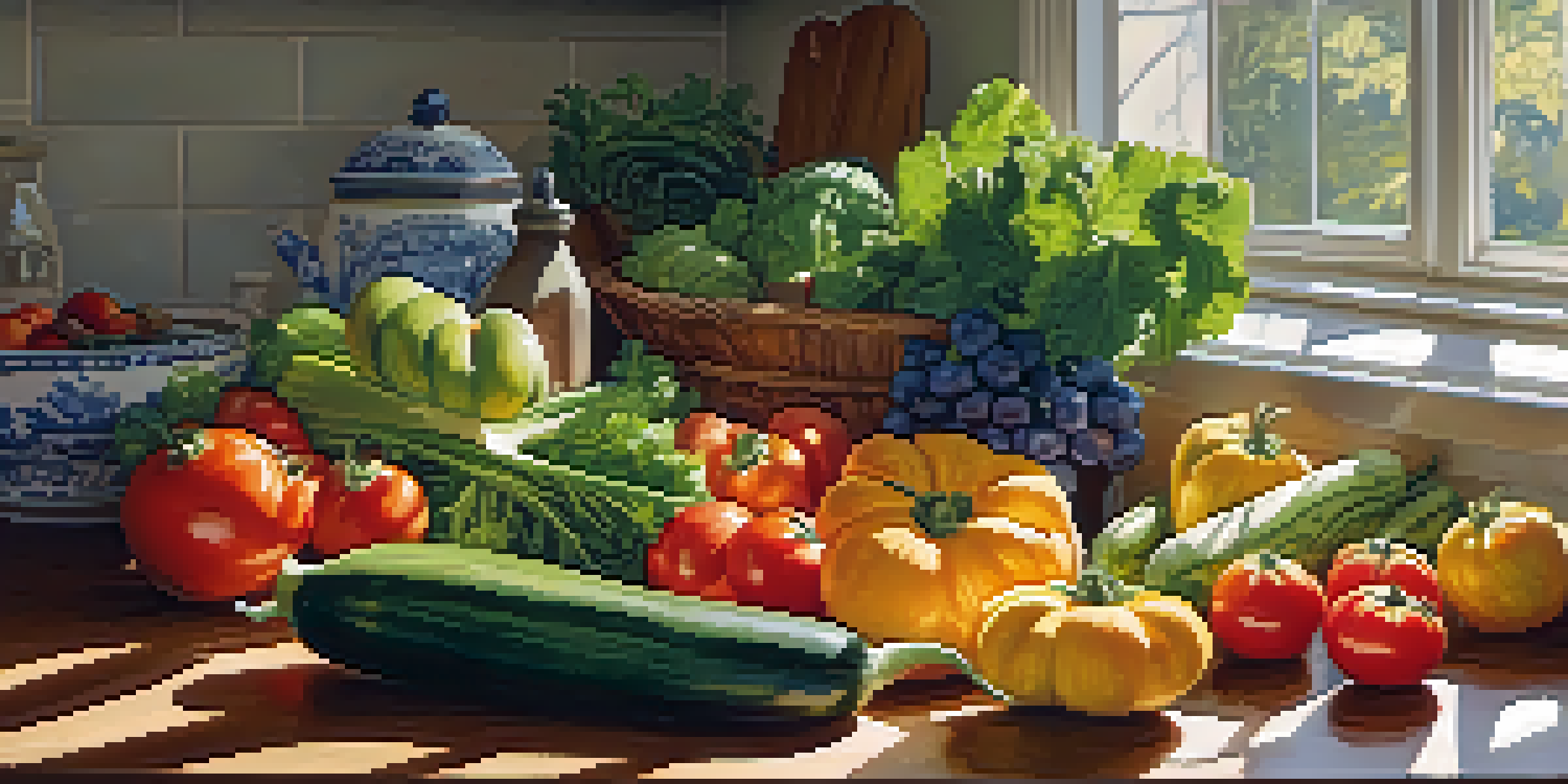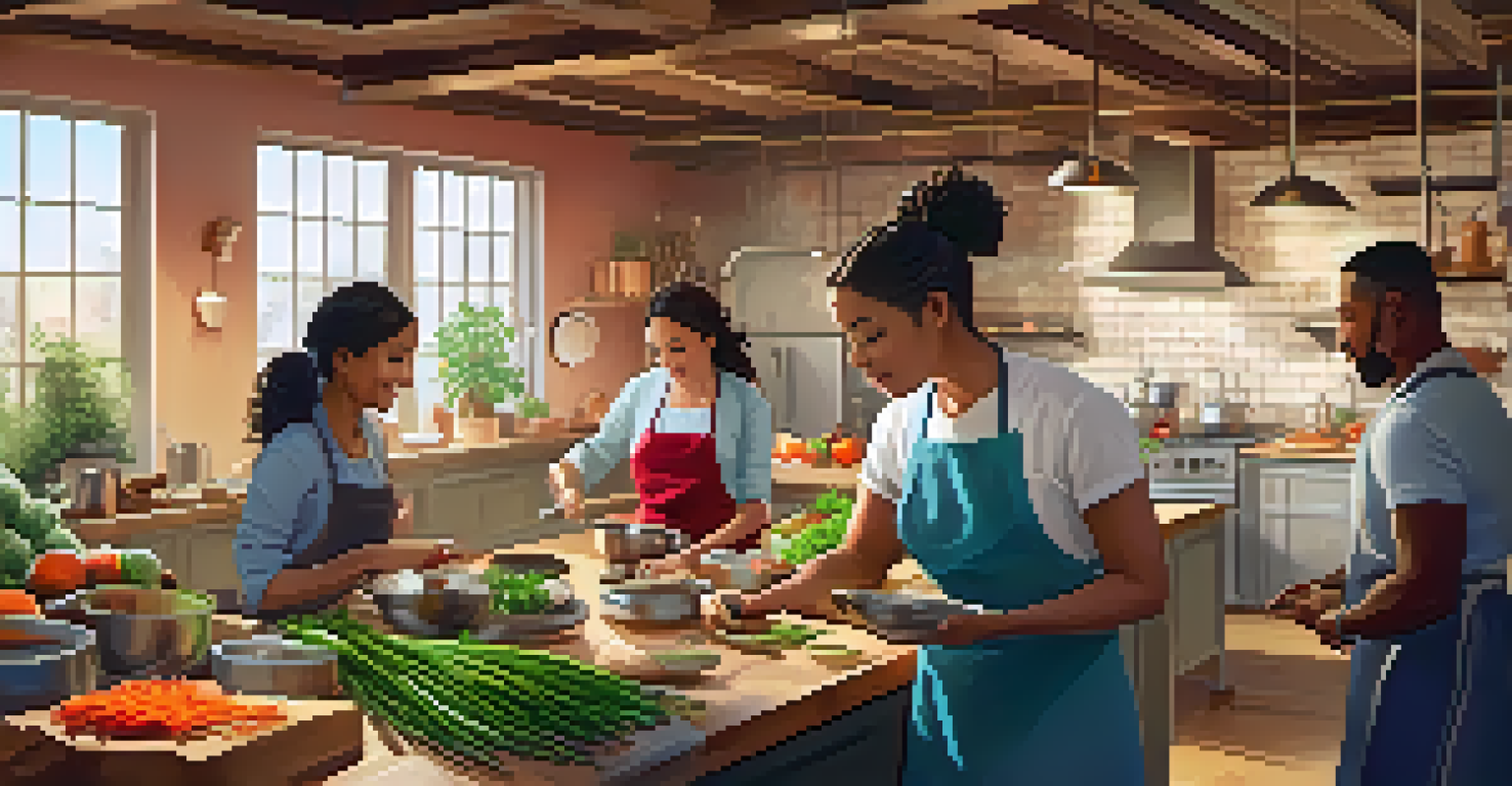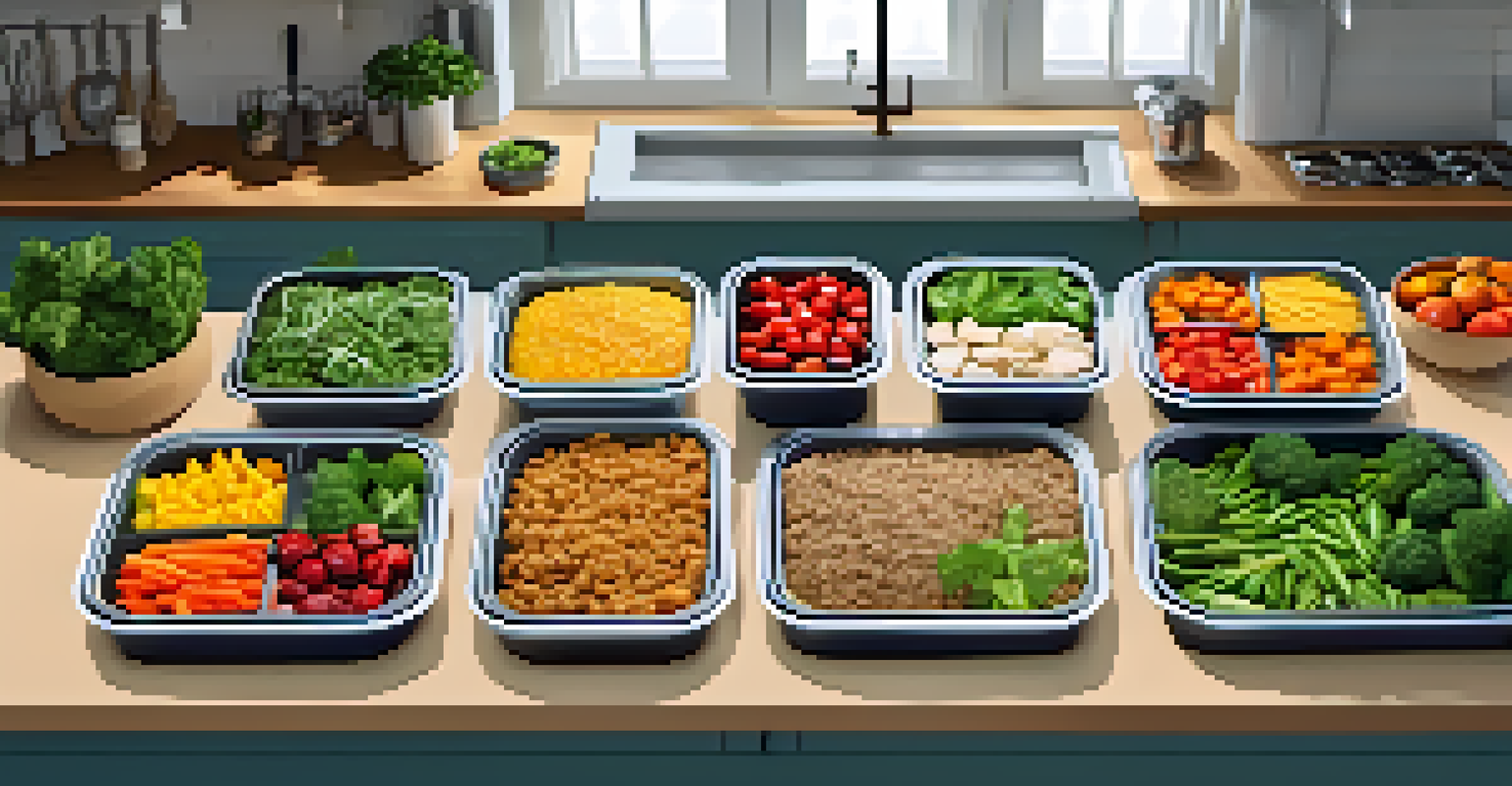Hands-On Cooking for Nutrition: Learn to Cook Healthily

Understanding the Basics of Healthy Cooking
Healthy cooking starts with understanding what constitutes nutritious food. This includes incorporating whole grains, lean proteins, and a variety of fruits and vegetables into your meals. By grasping these basics, you lay the foundation for healthier eating habits.
Let food be thy medicine and medicine be thy food.
It's also essential to pay attention to cooking methods. Techniques like steaming, grilling, and baking tend to retain more nutrients compared to frying. By choosing the right methods, you enhance the natural flavors and health benefits of your ingredients.
Moreover, being mindful of portion sizes is key. Learning how to balance your plate can help prevent overeating while ensuring you get a diverse range of nutrients. This foundational knowledge empowers you to make healthier choices in the kitchen.
The Joy of Meal Prep for Healthier Eating
Meal prep can be a game-changer when it comes to maintaining a healthy diet. By setting aside time to prepare meals for the week, you reduce the temptation to grab unhealthy options on busy days. It’s like setting your future self up for success!

Start by choosing a few recipes that feature nutritious ingredients you enjoy. Cook in bulk and store portions in the fridge or freezer, making it easy to grab a healthy meal when you need it. This not only saves time but also ensures you stick to your health goals.
Embrace Healthy Cooking Basics
Understanding nutritious food and cooking methods lays the foundation for healthier eating habits.
Additionally, meal prepping allows you to experiment with different flavors and cuisines. You might discover new favorite dishes that contribute to your health while keeping your taste buds happy. It’s a win-win!
Incorporating Seasonal Ingredients for Nutrition
One of the simplest ways to boost the nutritional value of your meals is by incorporating seasonal ingredients. Seasonal produce is often fresher, tastier, and packed with more nutrients. Plus, it’s a great way to support local farmers and reduce your carbon footprint.
You don't have to cook fancy or complicated masterpieces – just good food from fresh ingredients.
For example, in the fall, you can enjoy squash and apples, while summer brings a bounty of tomatoes and berries. Embracing what's in season can inspire creativity in the kitchen, resulting in exciting dishes that highlight the best flavors of the time.
Moreover, buying seasonal ingredients can be more budget-friendly. When you choose what’s abundant, you often save money while enjoying the best that nature has to offer. It’s a delicious cycle of health and sustainability!
Learning to Read Nutrition Labels Effectively
Understanding nutrition labels is key to making informed choices about the foods you buy. These labels can help you identify what's truly healthy versus what's just marketed as such. Learning to read them can be like having a secret decoder ring for your food!
Start by looking at the serving size, as it sets the standard for all the nutritional information that follows. Pay close attention to calories, sugars, and saturated fats, which can sneak into processed foods. This knowledge helps you gauge whether a product fits your health goals.
Meal Prep for Success
Planning and preparing meals in advance helps maintain a healthy diet and saves time during busy days.
Additionally, don't overlook the ingredients list. Aim for items with shorter lists that feature recognizable ingredients. This can guide you to healthier, less processed options that align with your cooking for nutrition journey.
Mastering Cooking Techniques for Healthier Meals
Hands-on cooking is all about mastering techniques that enhance the healthiness of your meals. Learning how to sauté, roast, or steam can transform vegetables into flavorful dishes that you’ll actually want to eat. These methods not only preserve nutrients but also elevate taste.
For instance, roasting vegetables can bring out their natural sweetness, making them a delightful addition to any meal. Similarly, sautéing greens with garlic and a touch of olive oil can turn a simple side dish into a star on your plate.
Furthermore, experimenting with herbs and spices can add depth to your meals without extra calories. This approach allows you to create vibrant dishes that are as nutritious as they are delicious, proving that healthy cooking can be a fun adventure.
Engaging in Cooking Classes for Skill Development
Participating in cooking classes can significantly enhance your culinary skills while focusing on nutrition. These classes offer hands-on experience and often provide insights into healthy cooking techniques and ingredient selection. It’s a fun way to learn and connect with others who share your interests!
In a class, you can learn from experts who can guide you through recipes and answer any questions you might have. This mentorship can boost your confidence in the kitchen, encouraging you to try new recipes and cooking styles at home.
Build a Supportive Cooking Community
Connecting with others who prioritize healthy cooking can provide motivation, accountability, and inspiration.
Moreover, cooking classes often emphasize the importance of nutrition and meal planning. By gaining this knowledge in a supportive environment, you’re more likely to adopt these practices into your everyday cooking routine, leading to healthier eating habits.
Creating a Healthy Cooking Community
Building a community around healthy cooking can provide support and motivation in your nutritional journey. Whether it’s friends, family, or online groups, having a network can make cooking and eating healthy feel less daunting and more enjoyable. It’s like having your own cheer squad!
Sharing recipes, tips, and experiences can inspire creativity in your cooking. You might discover new techniques or ingredients that you wouldn't have tried on your own. Plus, cooking together can turn meal prep into a fun social event rather than a chore.

Additionally, a community can keep you accountable. When you're surrounded by others who prioritize health, it encourages you to stay on track with your cooking goals. Together, you can celebrate successes and navigate challenges, making the journey more fulfilling.